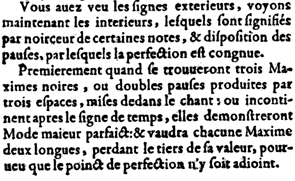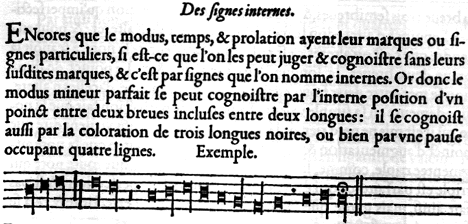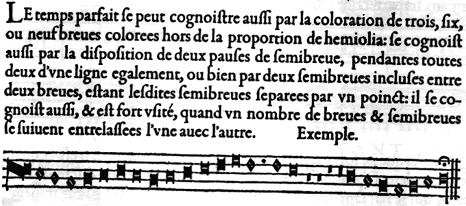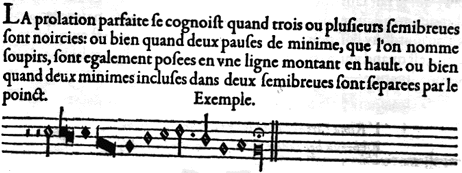 |
We've seen the external signs, let's now talk about the internal ones, namely the presence of some black notes, & the disposition of rests, by which can be deduced perfect mensuration. First, when one will come upon three black maximas, or double rests laying across three line spaces, inside the song; or immediately after the tempus sign, they will prove perfect major mode: & each [black] maxima will weight two longuas, loosing one third of its value, provided there's no perfection dot in their neighbourhood. |
 |
 |
Secondly, when one will similarly come upon three black longuas, or a rest over three line spaces, the song will be of perfect minor mode : & each [black] longua will weight two breves. |  |
 |
Thirdly, coming upon three black breves, or double semibreve rests at same height, then the song will be of perfect time: & each [black] breve will weight two semibreves. |  |
 |
Fourthly, coming upon three black semibreves, or double minim rests at same height, then the song will be of major prolation:&and [black semibreves] will loose one third of their value. |  |



 Close window
Close window